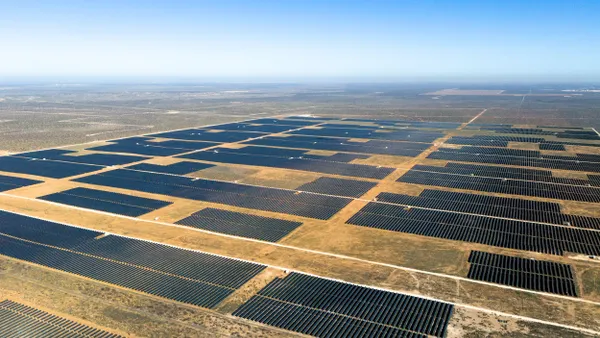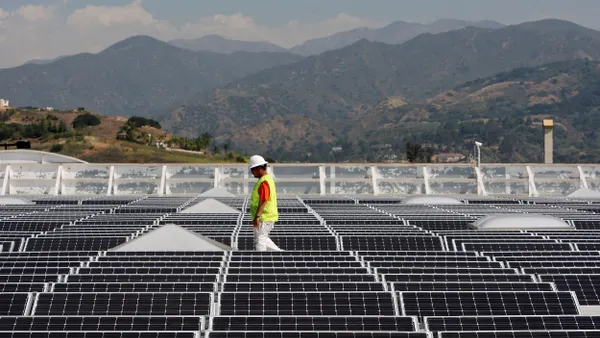Dive Brief:
- NuScale Power announced Monday that federal regulators have completed the second and third phases of the review of its small modular reactor (SMR) design, keeping it on track to develop a 12-module plant in Utah "by the mid-2020s."
- The U.S. Nuclear Regulatory Commission completed the first phase in the design certification application (DCA) process in spring 2018. NuScale says the review has it on track to bring a small nuclear generator to market before its Russian and Chinese competitors.
- Utah Associated Municipal Power Systems is signed on to be the first customer for NuScale's proposed reactor design. Last year, the companies announced a design "breakthrough" that is expected to boost capacity and lower the levelized cost of the project's electricity by up to 18%.
Dive Insight:
As the federal government continues its review, NuScale said it has been taking steps to ensure it hits the ground running once an approval is in hand.
Completing the second and third phases of the DCA "is a critical milestone for our company and the advanced nuclear industry,” NuScale Chairman and CEO John Hopkins said in a statement.
The second phase of the DCA review involves publication of the safety evaluation report; the third phase consists of the Advisory Committee on Reactor Safeguards review of both the staff's report and NuScale's DCA.
As the review advances to the fourth phase, NuScale said it has already signed agreements to explore the deployment of its technology in Canada, Jordan and Romania. And the company said similar agreements are being discussed "with various other potential customers."
NuScale also said it has begun to build out its supply chain in recent months, and has signed preliminary agreements with companies that will offer "technical expertise and will manufacture various components of the reactor." Among those are Doosan Heavy Industries and Construction, and Sargent and Lundy.
SMR designs aim for faster permitting and construction, and smaller amounts of energy. NuScale's reactor would produce up to 60 MW, and up to a dozen SMRs could be connected to create a scalable generation product.
Along with producing carbon-free energy, NuScale says the smaller design "reduces the financial commitments associated with gigawatt-sized nuclear facilities."
The first plant is expected online at the Idaho National Laboratory in 2026, Hopkins said.














